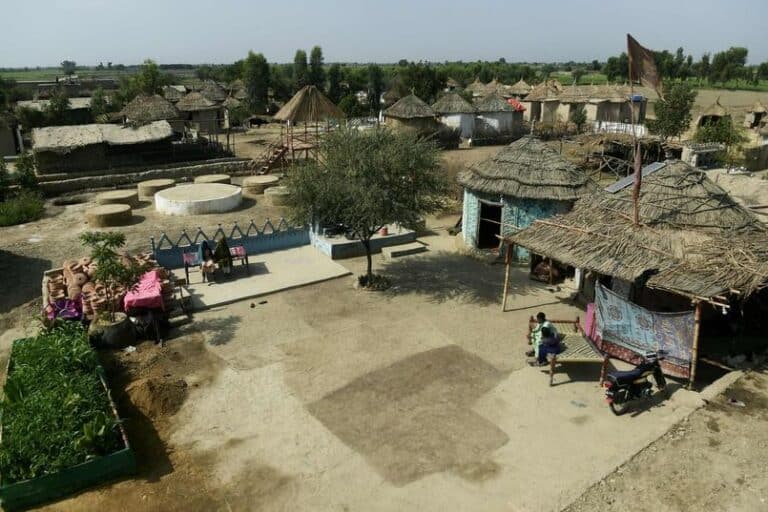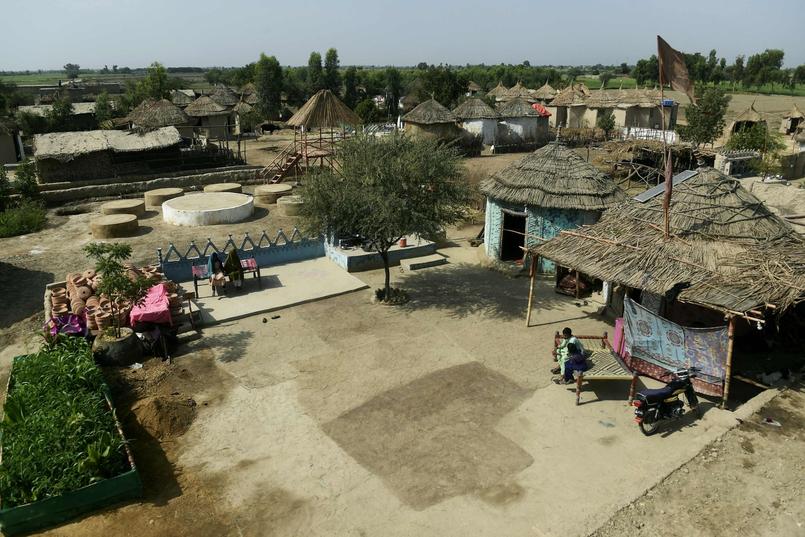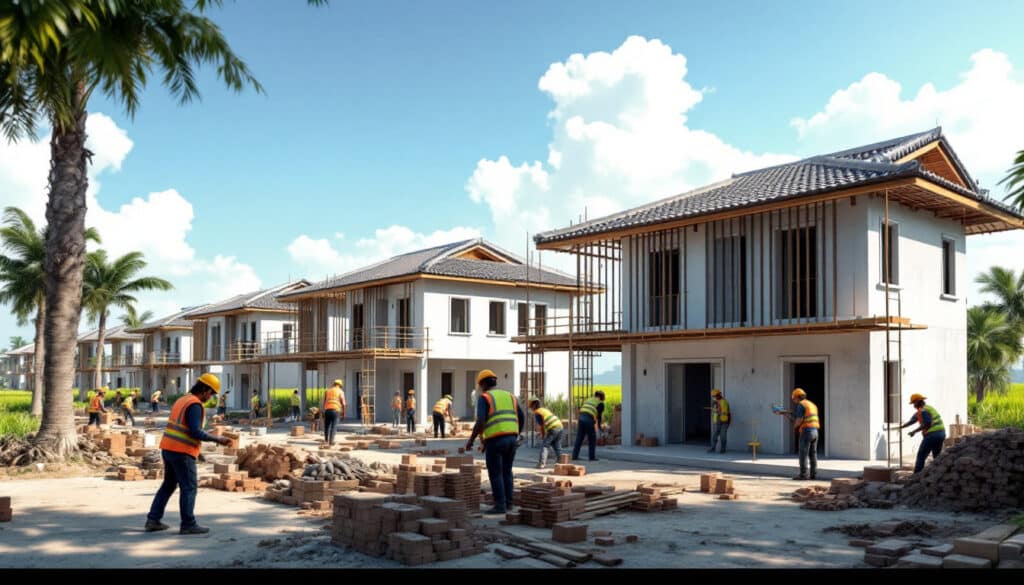The innovation scene vibrated intensely last week in Detroit, where over 500 exhibiting companies gathered for the RAPID + TCT 2025. Thousands of passionate visitors converged at the Huntington Place, reflecting the growing importance of additive manufacturing. The event was a reflection of a fully maturing industry, focusing on practical applications and added value for users.
The atmosphere was tinged with cautious optimism in the face of global economic uncertainties. Exhibitors showcased concrete solutions rather than spectacular product launches. Collaboration was at the heart of discussions, highlighting a shift from technological revolution to harmonious evolution. This strategic shift reinforces the integration of 3D printing into the global manufacturing landscape.

Last week, over 500 exhibiting companies and more than 15,000 attendees gathered at the Huntington Place in Detroit for the RAPID + TCT 2025. Despite uncertainties related to fluctuating tariff policies and volatile stock markets, a mood of cautious optimism prevailed at the show. This flagship event for additive manufacturing marked a decisive milestone in the industry’s evolution, where maturity is becoming the key word.
Table of Contents
Togglewhat technological innovations were unveiled at RAPID + TCT 2025?
The RAPID + TCT 2025 was the stage for numerous technological innovations that illustrate the progress and diversification of additive manufacturing. Among the notable new products, Rapid Liquid Print (RLP) drew attention with its Levity Machine, a revolutionary 3D printer that utilizes “gravity-free” printing technology. This machine allows for the rapid creation of flexible and elastic parts, ideal for medical applications like orthotics and prosthetics, as well as components in the aerospace and automotive industries.
On its side, Stratasys presented its new Neo 800+, a large-format SLA printer equipped with ScanControl+ technology, which speeds up printing by up to 50%. This innovation not only improves the quality of produced parts but also increases machine uptime through advanced features such as Z-Stage collision detection and live environmental monitoring.
The show also saw the introduction of the Jupiter 2 by Elegoo, a next-generation LCD 3D printer with a high-resolution 16K screen and an extended build volume. Aimed at prosumers, this printer offers increased modularity and advanced automation, thus facilitating larger production runs and better surface resolution.
Raise3D also made a splash with the RMS220, an SLS printer that offers excellent value for money thanks to its advanced features and competitive pricing. This model aims to democratize access to industrial 3D printing by providing high performance at a reduced cost.
Finally, ADDiTEC launched its Fusion S range, a new series of compact and economical LPBF printers, ideal for the dental, medical, and aerospace sectors. These innovative systems enable secure and efficient manufacturing of metal parts, with high precision and reduced needs for personal protective equipment.
how do leaders’ statements influence the future of the additive manufacturing industry?
Leaders present at RAPID + TCT 2025 shared visions and strategies that will guide the future of additive manufacturing. Glynn Fletcher, President of EOS, highlighted the need to shift from the “cool” aspect to a more profitable and integrated approach in the global manufacturing landscape. According to him, “cool is not a business model,” stressing the importance of aligning innovations with the real needs of the industry.
Brigitte de Vet-Veithen, CEO of Materialise, emphasized the crucial role of collaboration in driving growth. This perspective was echoed by Steve Prahalis, COO of SME, who stated that the hype cycle is over and it is time to focus on pragmatic and collaborative solutions.
These statements reflect a general trend towards a conscious evolution of the industry, where disruption is replaced by a harmonious integration of 3D printing technologies into existing manufacturing processes. Yoav Zeif, CEO of Stratasys, insisted on the importance of reducing internal competition and focusing on the adoption of technologies rather than the hype, stating that “if we focus and collaborate, we will win.”
This shift towards a more customer-centric approach and inter-company collaboration promises to strengthen the position of additive manufacturing in traditional production chains, paving the way for broader adoption and increased market maturity.
what was the importance of collaboration during the event?
Collaboration was a central theme at RAPID + TCT 2025, both in the organization of the event and in the interactions between exhibitors. This year, the show was co-organized with several other industry events, such as AeroDef Manufacturing, SAE International’s World Congress Experience (WCX), and America Makes’ Technical Review & Exchange (TRX). This collaborative approach created a unique platform where various sectors of additive manufacturing could meet, exchange ideas, and explore potential synergies.
Angie Szerlong, group director at SME, described this collaboration as “a very big strength” of the expo, offering participants an unprecedented opportunity to discover all facets of the manufacturing supply chain. This strategy resulted in a significant increase in visitor numbers, from 9,000 last year to over 15,000 this year.
The co-location of events not only enriched the experience for participants but also fostered a deeper integration of 3D manufacturing with traditional manufacturing processes. Steve Prahalis pointed out that this approach allowed for “carving a path into the manufacturing field” rather than simply “praising” 3D printing, thus facilitating a faster and more effective adoption of technologies.
This collaborative dynamic is compared to the “Costco model” by Prahalis, where visitors can maximize the value of their visit by accessing a diversity of sectors and technologies under one roof. This creates an environment conducive to innovation and the development of new solutions that address the complex challenges of modern manufacturing.
what developments were observed in AI process monitoring?
Another major aspect of RAPID + TCT 2025 was the emphasis on artificial intelligence (AI) and machine learning to optimize process monitoring in additive manufacturing. Companies like Interspectral and Euler presented advanced solutions that use AI to improve the quality and efficiency of 3D prints.
Interspectral, based in Norrköping, Sweden, unveiled its AM Explorer software, designed for process monitoring and quality assurance in metal additive manufacturing. This software uses real-time data from 3D printing and analyzes this information using AI models to detect defects as production occurs. According to Isabelle Hachette, CEO of Interspectral, this technology enables “filtering defective components on the fly,” thereby improving the reliability and profitability of manufacturing processes.
On the other hand, Euler, an Icelandic startup, introduced a defect detection tool using 3D printing camera data and AI algorithms. This solution, launched specifically for EOS printers, installs in less than five minutes and requires no calibration, making process monitoring more accessible and efficient for manufacturers.
In addition to monitoring software, Phase3D introduced Fringe Inspection: Cold Spray, an on-site inspection platform for cold spray additive manufacturing. Supported by the Air Force Research Laboratory (AFRL), this solution uses structured light to capture surface data and identify defects such as cracks and voids during the printing process. This innovation enables engineers to adjust parameters in real-time, thus ensuring optimal quality of the produced parts.
These advancements show how AI and machine learning are becoming indispensable elements for the monitoring and improvement of processes in additive manufacturing, thereby increasing precision, quality, and efficiency of productions.
how do the new technologies presented contribute to the evolution of the sector?
The innovative technologies unveiled at RAPID + TCT 2025 play a crucial role in the evolution of the additive manufacturing sector. By integrating advanced capabilities such as AI, automation, and modularity, these technologies make production processes more efficient, flexible, and profitable.
For instance, the AD-ProC ADD II, presented by a partner company, allows for enhancing hybrid 3D printing through simulation and automation. This solution offers better precision and reduces operational costs, thus facilitating the integration of additive manufacturing into traditional production environments.
Moreover, systems like the Leica Absolute Tracker ATS 800 from Hexagon enhance quality inspection and digitization in large-scale manufacturing by allowing precise measurements at long distances. This innovation is especially beneficial for industries such as aerospace, defense, and shipbuilding, where precision and efficiency are paramount.
These technological developments not only push the limits of what is possible with 3D printing, but also contribute to a broad adoption and a deeper integration of additive manufacturing technologies across various industrial sectors. By offering more robust and integrated solutions, these innovations promote a smooth transition to more modern and efficient production processes.
Furthermore, aligning these technologies with the real needs of the industry, as emphasized by Rich Garrity of Stratasys, ensures that advancements bring tangible value to companies, thereby reinforcing the credibility and relevance of additive manufacturing in today’s manufacturing landscape.
what are the participants’ feedback and the impact of RAPID + TCT 2025 on the industry?
The feedback from participants at RAPID + TCT 2025 has been overwhelmingly positive, highlighting the event’s significance for the development of additive manufacturing. Rich Garrity, Chief Business Unit Officer and President of Stratasys, stated: “It’s been a great show so far. We’ve had about 40% more leads on the first day compared to last year.” This feedback underscores the growing interest in the presented technologies and the show’s effectiveness as a networking and lead generation platform.
Moreover, the increase in participant numbers, from 9,000 to over 15,000 this year, attests to the rapid growth and increased attractiveness of the additive manufacturing sector. Exhibitors reported more direct and relevant engagement with visitors, who are looking not just to discover the latest innovations, but also to understand how these technologies can be applied concretely in their own industrial contexts.
Discussions during executive panels also reinforced the vision of an industry in transition, where collaboration and alignment with customer needs become essential for sustainable growth. Participants recognized the need to move beyond initial hype to focus on practical and integrated solutions, an approach that is increasingly valued in the mature additive manufacturing market.
Ultimately, RAPID + TCT 2025 not only showcased the latest technological innovations but also played a crucial role in shaping the future directions of the industry. By fostering an atmosphere of collaboration, knowledge sharing, and pragmatic innovation, the show contributed to strengthening the position of additive manufacturing as an essential pillar of manufacturing modernization.
the future prospects for additive manufacturing after RAPID + TCT 2025
With the success of RAPID + TCT 2025, the prospects for the future of additive manufacturing appear promising. The organizers, including SME, plan to further increase the presence of additive manufacturing at other large-scale industrial events such as IMTS and FABTECH Expo. This strategy aims to amplify the visibility and understanding of the impact of 3D printing within a broader manufacturing audience.
By integrating additive manufacturing into series of exhibitions and conferences focused on manufacturing technologies, SME hopes to encourage broader and faster adoption of 3D printing technologies. Steve Prahalis shared his vision of co-locating independent manufacturing events, which would allow visitors to benefit from an enriched experience, similar to the “Costco model”. This approach aims to provide maximum value to participants by bringing diverse technologies and sectors under one roof, thereby facilitating intersectoral synergies and collaborations.
Furthermore, the focus on sustainability and operational efficiency continues to guide innovations in the sector. The technologies presented at RAPID + TCT 2025, such as AI monitoring solutions and modular 3D printing systems, directly address the growing industry’s needs for more eco-friendly and resilient processes. This direction towards sustainable and cost-effective solutions is essential for ensuring the long-term growth of additive manufacturing.
In summary, the RAPID + TCT 2025 has not only demonstrated the vitality and constant innovation of additive manufacturing, but has also paved a clear path for its continued integration and expansion within the global manufacturing industry. Strengthened collaborations, technological advancements, and a commitment to practical and efficient adoption promise to shape a future where additive manufacturing occupies a central role in industrial transformation.
















